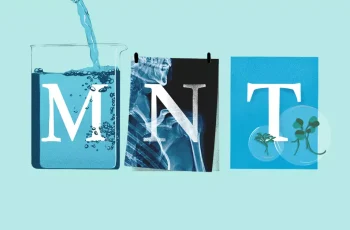Lewy Body Dementia (LBD) is a complex and often misunderstood condition that affects countless individuals and their families. Frequently overshadowed by more well-known forms of dementia, such as Alzheimer’s disease, LBD presents a unique combination of cognitive and motor symptoms that can be challenging to manage. Unlike Alzheimer’s, where memory loss typically occurs first, LBD is characterized by cognitive fluctuations, visual hallucinations, and parkinsonian symptoms, making it essential for both patients and caregivers to understand this multifaceted disorder.

The Challenge of Timely Diagnosis
One of the significant hurdles in managing Lewy Body Dementia is the often delayed diagnosis. The path to identifying LBD is fraught with complications, as the symptoms can be subtle and easily mistaken for other conditions or attributed to normal aging. According to the National Institute on Aging, the average time from the onset of symptoms to diagnosis can span several years, often between 5 to 7 years. This delay not only complicates treatment but can also negatively impact the overall prognosis for individuals affected by LBD.
The variability in symptom presentation adds to the diagnostic challenge. Patients may experience a range of symptoms, including cognitive fluctuations, visual hallucinations, and motor difficulties, which can lead to confusion among healthcare providers. Early and accurate diagnosis is crucial, as it allows for timely intervention and management strategies that can significantly improve the quality of life for those living with LBD.
Understanding the Symptom Spectrum
Lewy Body Dementia is often described as a chameleon, presenting differently in each individual. The symptom spectrum can include:
- Cognitive Decline: Patients may experience fluctuations in attention and alertness, leading to confusion and difficulty concentrating.
- Visual Hallucinations: Many individuals with LBD report vivid hallucinations, which can be distressing and require careful management.
- Motor Symptoms: These may include stiffness, tremors, and bradykinesia (slowness of movement), resembling symptoms of Parkinson’s disease.
- Sleep Disturbances: Individuals may experience REM sleep behavior disorder, where they act out their dreams, leading to potential injury.
This variability means that caregivers must remain vigilant for any changes in symptoms, whether subtle or pronounced. The lack of clearly defined stages in LBD further complicates the situation, emphasizing the need for continuous monitoring and a personalized approach to care.
Treatment Approaches: Finding Hope Amidst Uncertainty
While there is currently no cure for Lewy Body Dementia, several treatment options can help manage symptoms and improve the quality of life for patients. A multifaceted approach often involves:
- Medications: Certain medications, such as cholinesterase inhibitors, can help manage cognitive symptoms and hallucinations. Antipsychotic medications may be prescribed cautiously, as some can exacerbate symptoms in LBD patients.
- Physical and Occupational Therapy: These therapies can help improve mobility and daily functioning, enabling individuals to maintain independence for as long as possible.
- Personalized Care Plans: Tailoring treatment plans to the specific needs of the patient is essential. This may involve regular consultations with healthcare professionals to adjust medications and therapies based on the evolving nature of the disease.
Proactive communication between caregivers and healthcare providers is vital. When caregivers notice changes in symptoms, discussing these observations with medical professionals can lead to timely adjustments in treatment, ultimately bridging the gap between distress and effective management.
The Importance of Awareness and Support
Awareness and education about Lewy Body Dementia are crucial for both patients and caregivers. Understanding the complexities of this condition can lead to better outcomes and improved management strategies. Caregivers should be equipped with knowledge about the symptoms and progression of LBD to provide informed support.
Support groups and resources can also play a significant role in helping families navigate the challenges associated with LBD. Connecting with others who are experiencing similar situations can provide emotional support and practical advice, reducing feelings of isolation.
In addition, fostering open communication within families about the condition can help alleviate anxiety and uncertainty. Discussing preferences for care and treatment options early on can empower patients and their families to make informed decisions about their healthcare journey.
Conclusion: Embracing the Journey with Hope
Navigating the complexities of Lewy Body Dementia is undoubtedly challenging, but with awareness, timely diagnosis, and individualized care, it is possible to enhance the quality of life for those affected. By understanding the unique symptoms and challenges of LBD, caregivers can create a supportive environment that prioritizes the needs and preferences of the patient.
In this journey, it is essential to remain hopeful. While LBD presents many uncertainties, proactive management and a compassionate approach can significantly impact the experiences of individuals living with this condition. By embracing the complexities of Lewy Body Dementia, we can foster a more informed and supportive community, ultimately leading to better care and improved outcomes for all those affected.

Understanding Lewy Body Dementia is not just about recognizing its symptoms; it is about empowering patients and caregivers to navigate this intricate landscape together, ensuring that every voice is heard and respected throughout the journey.

